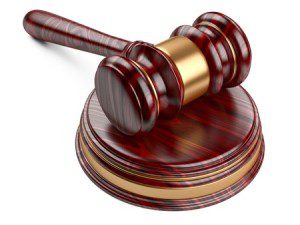 The Court also observed that there does not appear to be a consensus among the experts, or in the scientific literature, on the subject of false denials. To assess the reliability prong of N.J.R.E. 702, the Court considers whether CSAAS has achieved general acceptance in the scientific community. The evidence presented at the remand hearing answers that question. Judge Bariso found that there is consensus for only one type of behavior — delayed disclosure. The Court agrees. Because evidence about CSAAS as a whole and the other four categories does not satisfy the Frye standard, experts may not present evidence on those topics at trial. When the other prongs of Rule 702 are met, the State may present expert evidence on delayed disclosure among victims of child sexual abuse — and only that evidence — to a jury. When expert evidence on delay is introduced, trial courts should provide limiting instructions to the jury — both before an expert witness testifies and as part of the court’s final charge. The Court asks the Committee on Model Criminal Jury Charges to draft appropriate instructions limited to delayed disclosure as soon as practicable. The Court also invites the parties and amici to submit proposed charges to the Committee and provides guidance about the charge.
The Court also observed that there does not appear to be a consensus among the experts, or in the scientific literature, on the subject of false denials. To assess the reliability prong of N.J.R.E. 702, the Court considers whether CSAAS has achieved general acceptance in the scientific community. The evidence presented at the remand hearing answers that question. Judge Bariso found that there is consensus for only one type of behavior — delayed disclosure. The Court agrees. Because evidence about CSAAS as a whole and the other four categories does not satisfy the Frye standard, experts may not present evidence on those topics at trial. When the other prongs of Rule 702 are met, the State may present expert evidence on delayed disclosure among victims of child sexual abuse — and only that evidence — to a jury. When expert evidence on delay is introduced, trial courts should provide limiting instructions to the jury — both before an expert witness testifies and as part of the court’s final charge. The Court asks the Committee on Model Criminal Jury Charges to draft appropriate instructions limited to delayed disclosure as soon as practicable. The Court also invites the parties and amici to submit proposed charges to the Committee and provides guidance about the charge.
Proponents of expert evidence on delayed disclosure must satisfy all three parts of Rule 702, including that the testimony concerns a subject beyond the ken of the average juror. Expert testimony is not appropriate to explain what a jury can understand by itself. By contrast, issues that are beyond the understanding of the average juror may call for expert evidence. Trial judges, as gatekeepers, decide that threshold question. Whether a victim’s delayed disclosure is beyond the ken of the average juror will depend on the facts of the case. In this case, no juror needed help from an expert to understand and evaluate Bonnie’s testimony.
Applying the above findings to this case, it was error to admit testimony about CSAAS — both as to the theory in general and the behaviors that are not generally accepted by the scientific community. There are also serious concerns about the admissibility of expert testimony on delayed disclosure in this case because Bonnie, a teenager, gave reasons for the delay that were not beyond the ken of the average juror. Nonetheless, those errors are harmless in light of the overwhelming evidence of defendant’s guilt. In light of the evidence presented — in particular, the testimony of the victim combined with a graphic audio recording of an act of sexual abuse — there is not a sufficient possibility that the admission of CSAAS evidence led the jury to an unjust verdict or one it might otherwise not have reached as to Counts One and Two. During closing argument, defense counsel conceded that there was sufficient evidence to support Count Three. Finally, the CSAAS evidence had little if any bearing on the witness tampering charge. The admission of the CSAAS evidence in this case was harmless. This includes defendants in and out of prison. Those who are not in prison will still be motivated to get out from under the onerous requirements of Megan’s Law.
